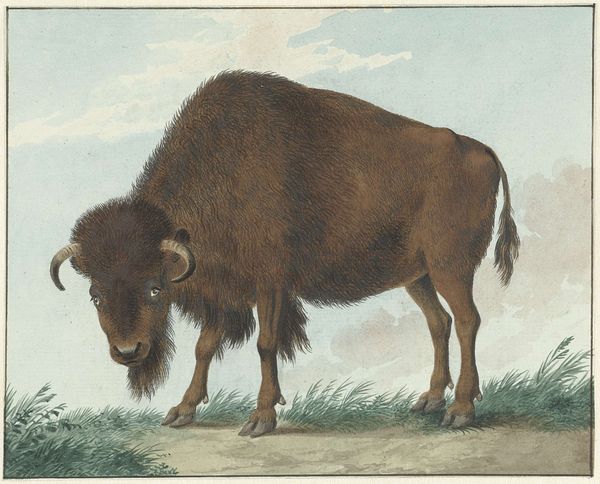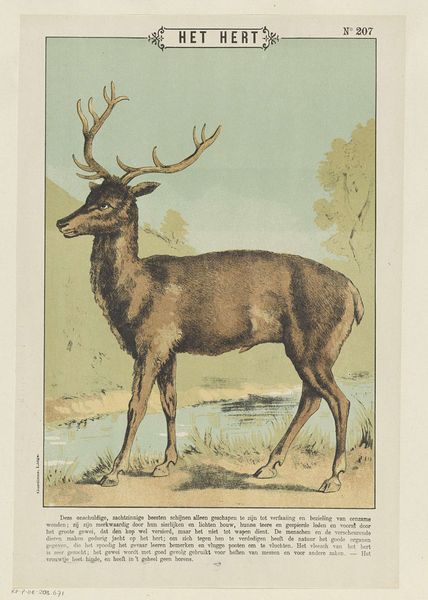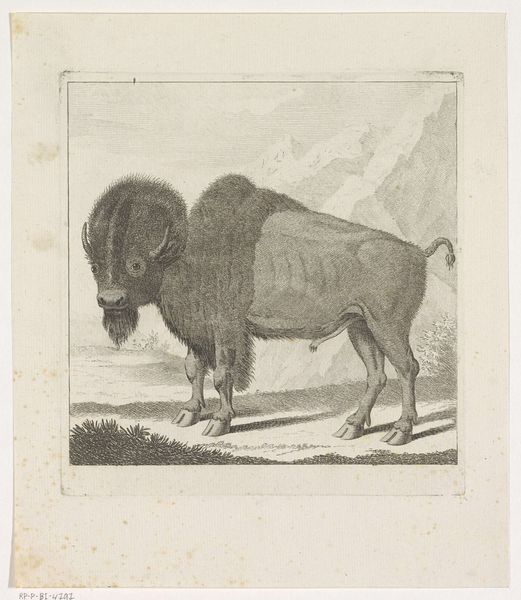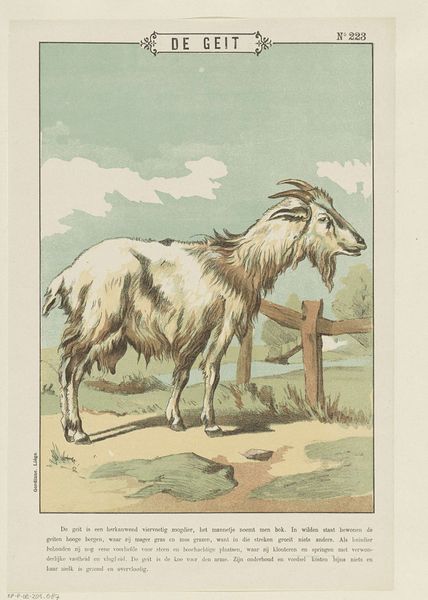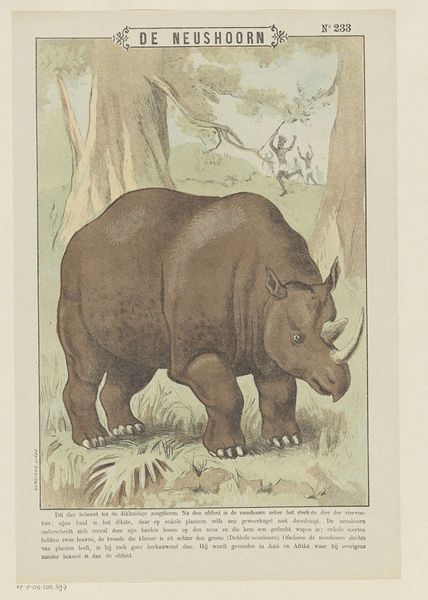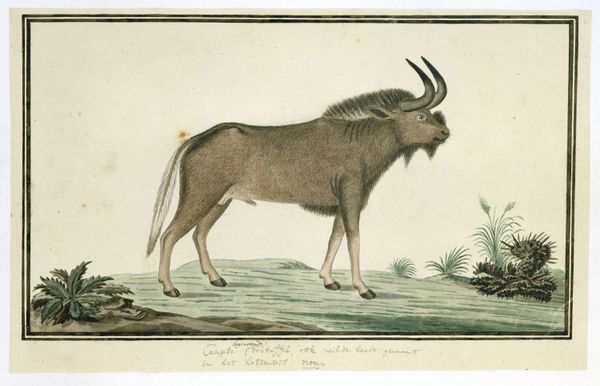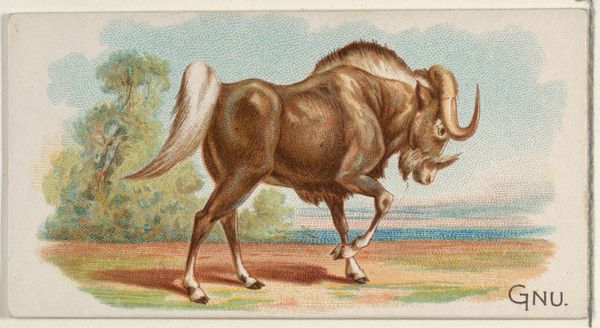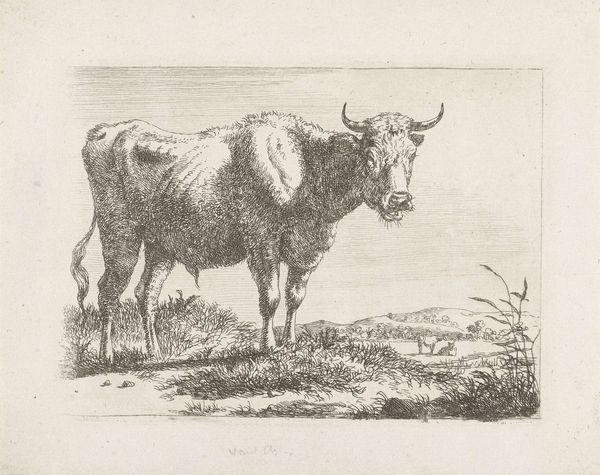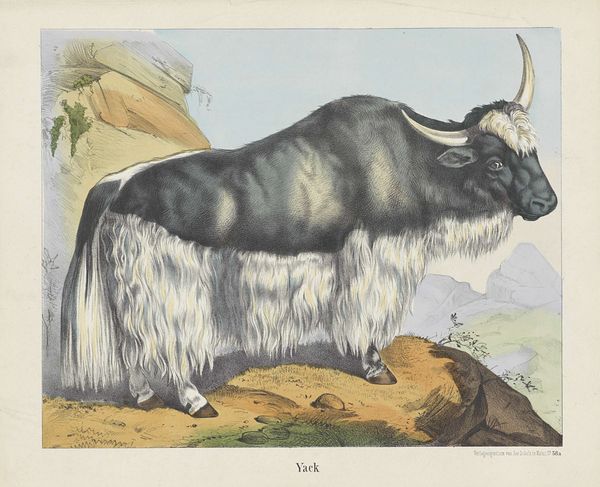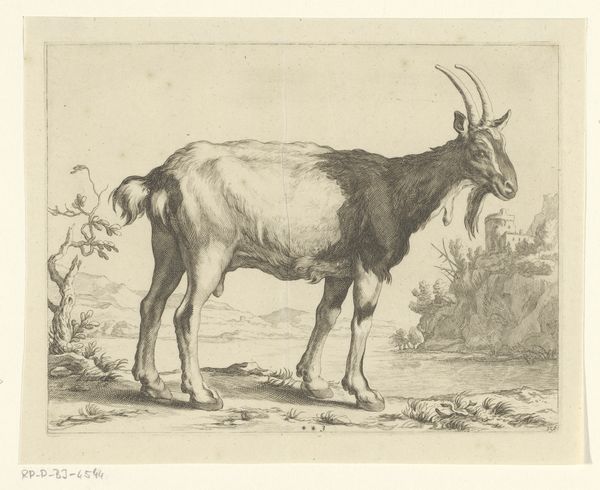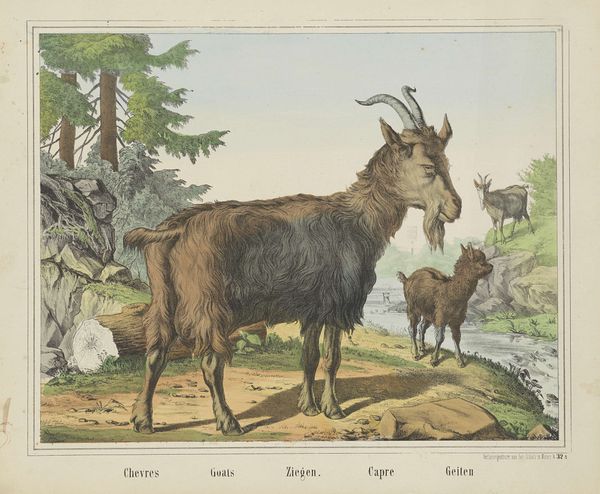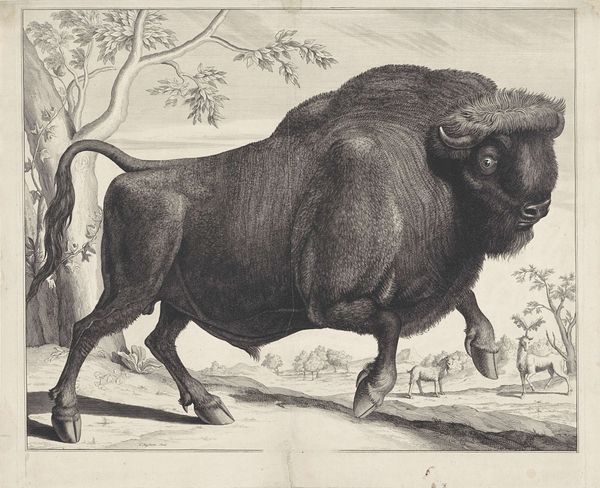
# print
#
landscape
#
realism
Dimensions: height 400 mm, width 270 mm
Copyright: Rijks Museum: Open Domain
Curator: Standing before us is "De buffel", or "The Buffalo", a print from the period of 1894 to 1959 currently residing here at the Rijksmuseum. Editor: It's arresting, isn't it? There's a sort of quiet, sturdy presence. The muted colours give it a humble, almost somber feel. Curator: Its style echoes the Realism movement of its era, emphasizing accurate representation and often focusing on ordinary subjects like this buffalo in its landscape. Printmaking allowed for widespread distribution, making it accessible to a broader audience. Editor: Thinking about that access, the print, in its potential ubiquity, almost domesticates this creature. It pulls the buffalo, traditionally a symbol of wildness and labor, into a sphere of domesticity and the home, printed within an image, to be consumed. Does that lessen it, the symbol? Curator: Or does it broaden its reach? This was a period of increased global trade and colonialism, of imposing specific human labor roles and expectations on the land. Depicting the buffalo like this likely reflected and perhaps reinforced certain cultural and economic narratives tied to labor and landscape, but the animal it depicts is indifferent to it. It may serve as reminder that we have work to do to consider its point of view as well. Editor: Absolutely, situating this within those broader narratives – seeing how its meaning shifts when viewed through lenses of, say, animal rights or ecological concerns – reveals a lot about our changing relationship with nature and labor. Curator: By displaying "De buffel" now, we invite audiences to critically examine its historical context and its place in the socio-political discourses surrounding industrialization. Editor: Precisely. Engaging with this piece means confronting those historical power dynamics and questioning how those relationships continue to shape our perspectives today. A seemingly simple print sparks complex questions about power, access, and our changing world.
Comments
No comments
Be the first to comment and join the conversation on the ultimate creative platform.
